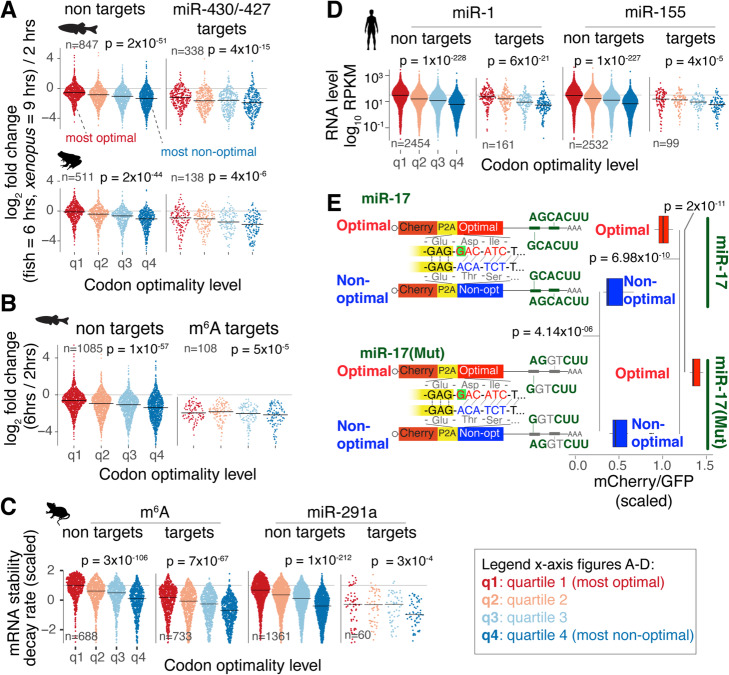Fig. 4.
Codon optimality affects mRNA stability and gene expression of microRNA targets and m6A targets in vertebrates. mRNAs were divided into targets (microRNA or m6A) and nontargets. Each group was divided into four equal groups with decreasing levels of optimal codons. All p values were computed with a linear model. a Sinaplot showing the distribution of mRNA stability during MZT (log2-fold change 6 h post-fertilization (hpf)/2 hpf) for targets and not target genes of miR-430/-427 in zebrafish (Additional file 1: Fig. S1a-b) and Xenopus [33] embryos. b Sinaplot showing the distribution of mRNA stability during MZT in zebrafish for methylated (m6A) and non-methylated mRNAs [10]. c Sinaplot showing the mRNA stability distribution of m6A and miR-291a targets [29] and not targets in mouse embryonic stem cells. d Sinaplot showing the RNA-level distribution of miR-1 and miR-155 targets [37] after microRNA transfection in human cells. e Diagram depicting reporter genes containing almost identical nucleotide sequence but different codon composition (enriched in optimal or non-optimal codons) due to a single insertion changing the frame. For each coding region, a 3′UTR sequence containing miR-17 seed sites (7-mer AGCACTT) or a mutant version with two nucleotides mutated disrupting the miR-17 seed sites were cloned. The boxplot shows the distribution of scaled mCherry/GFP intensity for reporters with and without miR-17 seed site in transfected 293T human cells. Both coding sequence and miR-17 affect the reporter expression (p values computed with paired t test)

